EXCITINGTIMES
Recap of RAPID +TCT
by IndustrialPrintMagazine Staff
RAPID+ TCT took place at the beginning of May in Chicago, IL at the McCormick Convention Center. The event was an exciting combination of product introductions, partnership announcements, and a general positive atmosphere about the growing, innovative additivemanufacturing (AM) industry.
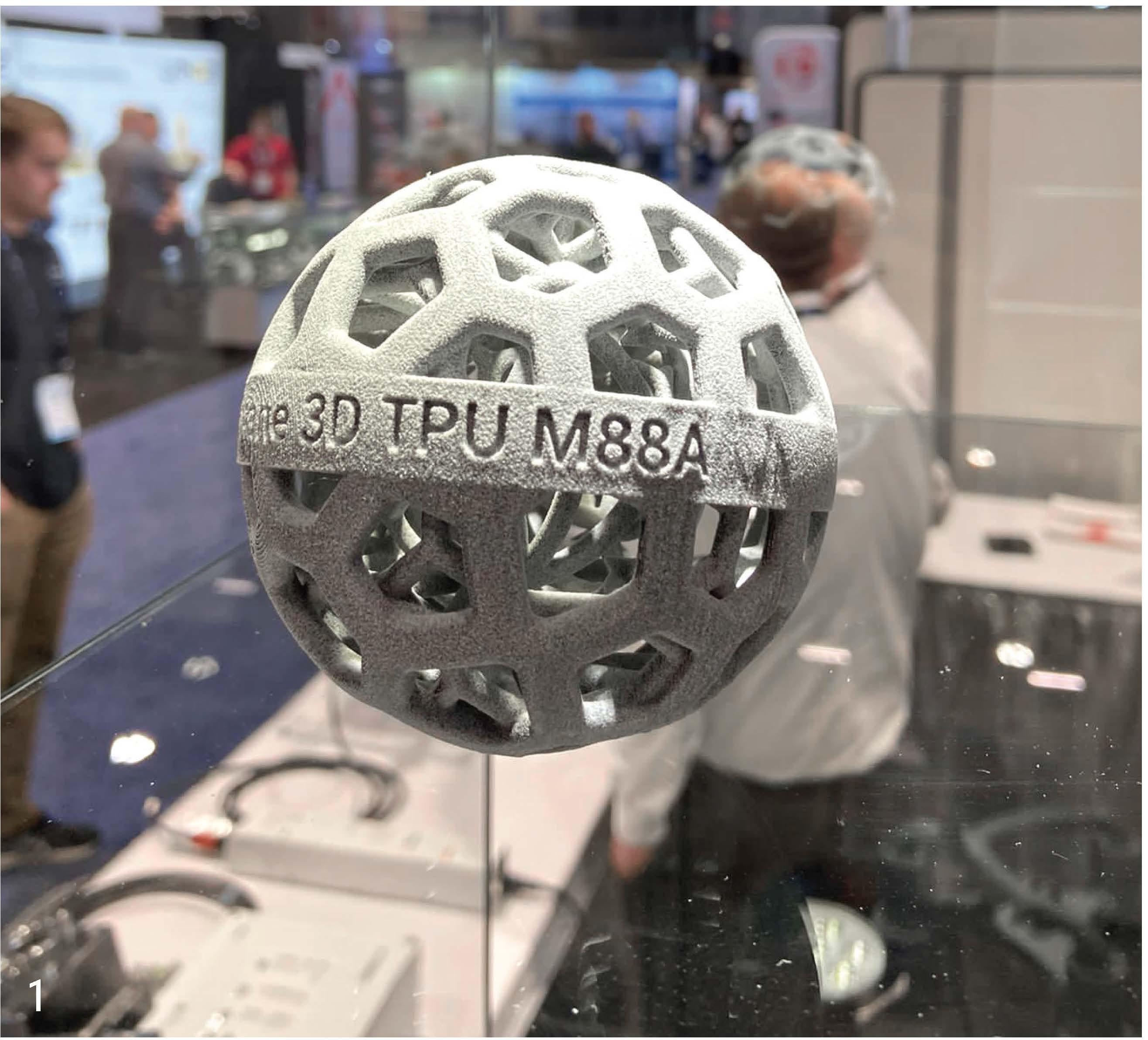
Wednesday's keynote, from Omar Mireles, research and development engineer, NASA Marshall Space Flight Center-a selfproclaimed "lab guy"-summed it up by saying "it's in exciting time to be in this field."
Notable News

We asked exhibitors to share a brief recap of their time at the event.

3DCeram Sinto promoted and discussed the latest technologies and products in technical ceramics and three-dimensional (3D) printing, including the M.A:r. printer. The M.AI is a versatile machine with a robust structure able to house several shaping technologies. 3DCeram also featured the ClO00 FLEXMATIC, the newest stereolithography (SLA) 3D printer in the product line up.
Addiblast showcased its fully automated MARS 03 de-powdering system for metal 3D printed parts. The event highlighted the growing trend of larger and heavier build volumes in powder bed fusion. Following this trend, it plans to announce MARS 04/05 de-powdering systems to handle up to one cubic meter build volumes.
ADDiTEC unveiled its latest product, the Performance AMRC -P or Additive Manufacturing Robot Cell - Portable. The Performance AMRC -P is a production-ready portable robot cell. Its advanced features include a potent 6kW fiber laser configured deposition head and closed loop process controls, affording high deposition rates of up to4 kg per hour for titanium. The system is capable of printing parts of up to 1.8 meters in dimension in a range of materials.
AMFG showcased the power of its Autonomous MES solution. It presented its robust workflow software, which is a fusion of seamless third-party integration and advanced automation.The company unpacked the features thatmake its product an end-to-end solution. From an Instant Quote functionality, to inventory and build management, and concluding with postprocessing, logistics, and shipping, it demonstrated how AMFG revolutionizesproduction, making itefficientandstreamlined.
CNPCPowder expandeditsAMP atomization technology, offering higher outputof PREP qualityparticlesatcosts thatare inline with traditional atomization technology. Furthermore, its AM facility has been outfitted with over seven new atomizers with a combined output of ~5,000 tons of inert gas spherical atomized metal powders.
industrialprtntmagazine.com SHOWTIME
June2023 [IndustrialPrintMagazineJ 5
1. Picture courtesy ofThe Lubrizol Corporation.
CoreTechnologie showcased its 3D printing pre-processing software-4D_ Additive, which optimizes healing, positioning, supports, texturing, automated nesting, and slicing. 4D_Additive reads CADx data from over 24 different major formats as exact boundary representation including all PMI, attributes, and history. It repairs .STL utilizing a marching cube algorithm. CAD models are saved in all common formats as well as in common slicing formats.
Evonik showcased one of it key 3D printing materials-INFINAM TPC copolyester elastomer powders-suitable for powder bed fusion technologies. It works with industrial 3D printer manufacturer Farsoon to bring this robust, yet flexible 3D printing powder to market. It also presented a range of new photopolymers such as INFINAM RG 2000 L, an application-driven material development that meets specific requirements such as a low yellowing index or excellent
light transmission for eyewear applications.

Fabrisonic released the SonicLayer 1600, a mid-sized production machine that features a 3x2-foot build envelope. The SonicLayer 1600 is affordable and ideal for those that are not building large parts.
Farsoon showcased the FS301M with a 305x305x400 build size, enhanced user operation, and open parameters and materials that allow for cost-effective production and highquality parts. Visitors also admired the nearly one-meter-tall rocket engine nozzle printed on its FS621M-4 high-performance metal 3D printing system, ideal for aerospace, automotive, and medical industries. The company exhibited parts printed on its large-platform Flight 403 and Flight lK.

Formlabs introduced three new offerings-flame retardant resin, Build Platform 2L, and 3MF Support. Formlabs' first UL 94 V-0 certified resin and first self-extinguishing material is developed to expand printing capabilities for high-temperature components. Build Platform 2L is a next-generation build platform designed with Quick Release Technology enabling users to remove large parts without tools in seconds. 3MF Support allows for smaller file sizes and the storage of multiple models in one file on existing PreForm software.
HP Inc. unveiled automation solutions for the HP Jet Fusion, allowing customers to simplify workflows and reduce costs associated with high-volume 3D production. Additionally, HP showcased expanded material offerings, HP Digital Production Suite and HP Digital Production Services, allowing customers to scale 3D printed parts production.

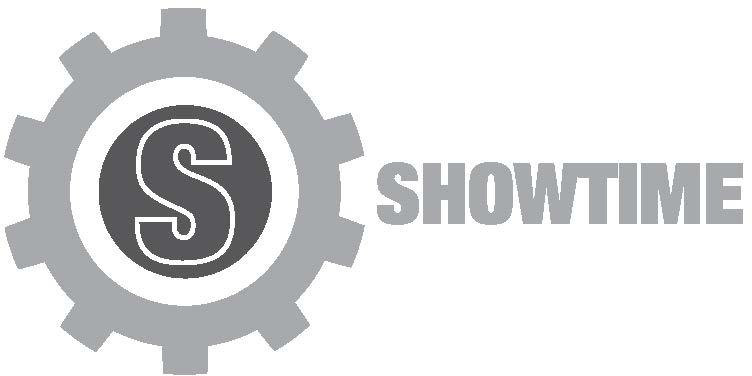
6 [lndustfia/PrintMagazineJ June2023
industrialprintmagazine.com
JEOL featured its Electron Beam Metal powder bed fusion 3D printer and parts made for the aerospace, medical, and energy sectors. Together with Cumberland Additive it announced an installation at Cumberland’s Neighborhood 91 facility in Pittsburg, PA. JEOL hosted a popular social event with a sommelier serving a selection of sake.
Lubrizol 3D Printing Solutions highlighted new ESTANE 3D TPU M88A for HP’s Jet Fusion 5200 printers; a soft, flexible and durable material suited for production parts, allowing for printing of complex geometries and challenging lattice structures.
Impossible Objects launched the CBAM 25 3D printer and the SME AM Industry Achievement award was presented to Jeffrey DeGrange, CCO, Impossible Objects.
Mantle received the SME AM startup technology award. Mantle is revolutionizing precision tooling with its metal 3D printer designed specifically for toolmaking. The company’s 3D printers are an efficient way to produce mold and die inserts with the accuracy, surface finish, and tool steel properties demanded by toolmakers.
Markforged unveiled for the first time in North America its new binder jet workhorse the PX100. From its acquisition of Digital Metal, Markforged has doubled the print speed and throughput of the Digital Metal DMP Pro. The PX100 enables manufacturers to become industry leaders by designing and fabricating previously un-makeable parts and unlocking customization at scale. It is capable of print speeds of up to 1,000 cm3 per hour and has a range of available materials.
Meltio showcased its unique wirelaser metal 3D printing technology.
Meltio’s solutions, the M450 metal 3D printer and wire-laser head that integrates with a CNC machine and robotic arm, help automotive, aerospace, marine, military, engineering, and oil and gas manufacture and repair metal parts made of stainless steel, titanium, nickel, and invar. Thanks to this technology, industries reduce costs and gain efficiency and productivity.

Meteor Inkjet showcased a range of printhead drive electronics and software, as well as demonstrated powerful drop visualization tools and unveiled ShellPro, patented technology offering step-function savings in the energy and materials required to create complex 3D structures by binder jetting.
nTop announced the next major update of its flagship product—nTop 4. nTop 4 introduces Field Optimization, a new generative design technology to help engineers navigate the number of design parameters introduced by these complex engineering problems, accelerating decision making and improving part performance.
Nexa3D launched its XiP Pro ultrafast industrial 3D printer, providing the highest daily production throughput and lowest total cost of ownership in its class. Featuring print speeds exponentially faster than the traditional SLA and digital light processing-based technologies, more powerful print engine, and a 19.5-liter build volume, the XiP Pro delivers previously unattainable production capabilities for industrial users, according to the company.
Prima Additive enjoyed its first participation at RAPID + TCT. After several years of activity in Europe, today it offers its solutions for metal AM with laser powder bed fusion and directed energy deposition technology, as well as a full suite of services in North America.
Quantica showcased its NovoJet C-7 open system. Beyond its sleek design, what captivated attendees was the capability of the NovaJet C-7 to combine diverse materials. The heart of Quantica’s technology lies in its NovoJet printheads, which enable the printing of
industrialprintmagazine.com June 2023 [ Industrial Print Magazine ] 7
4
2. Xact Metal attended RAPID + TCT with multiple software-centric announcements. 3. Nexa3D launched its XiP Pro industrial 3D printer. 4. Fabrisonic released the SonicLayer 1600, a mid-sized production machine that features a 3x2-foot build envelope.
higher viscosity materials, resulting in higher performance end-use parts and products. Complementing the display was the presence of its JetPack material
jetting kit, along with an array of multimaterial print samples.
Roboze presented case studies demonstrating how it is transforming the industry paradigm with super polymers. The event also highlighted ADDMAN’s entry into the Roboze 3D Parts Network, a U.S.-based provider of a range of manufacturing solutions. The objective of this collaboration is to enhance

its industrial manufacturing capabilities using AM systems. Roboze 3D Parts, an expanding network, intends to hasten the world’s transition towards sustainable production by eliminating physical warehouses, enabling on demand and just-intime production of parts, and delivering them where necessary.
UltiMaker unveiled a new brand identity, with a spotlight on its solutions for manufacturing and product development— Method X and the flagship S7, the newest and most versatile 3D printer on the market. From polymers to metal, UltiMaker also highlighted its extensive 3D printing materials portfolio, showcasing what its printers can do for any application.
Xact Metal attended the event with multiple software-centric announcements. Pursuing its mission to make metal 3D printing more affordable and accessible, Xact Metal announced a new partnership with Oqton to offer 3DXpert and MOS software packages while also extend its current software partnership, Materialise Magics. Additionally, Xact Metal rolled out an AIpowered layer-wise monitoring add-on called Smart Layer. This product can automatically identify print anomalies in real-time, preventing build failures before they occur.
Xometry presented its Xometry Instant Quoting Engine, which offers instant pricing and lead time estimates for more than a dozen manufacturing processes. The platform comes with built-in tools and customization options. Xometry showcased several manufacturing projects made from different materials, including polymer and metal 3D printing.

2024
RAPID + TCT is on the move. Next year’s event takes places in Anaheim, CA. IPM
8 [ Industrial Print Magazine ] June 2023 industrialprintmagazine.com
5 6
5. Xometry presented its Xometry Instant Quoting Engine, which offers instant pricing and lead time estimates for more than a dozen manufacturing processes. 6. 3DCeram Sinto, a turnkey provider for additive manufacturing ceramics, had a successful show at RAPID + TCT.
D..irect...t□ □ ...bje..ct
by Melissa Donovan
Efficient production is good for a company's bottom line, aids in sustainability, and places less burden on press operators and the rest ofa business' staff. In manufacturing, a number of notable trends like shorter runs and customization benefit from the effectiveness of digitalprint. Specifically; interms of product decoration, printing directly to an object has never been more cost effective for on demandrequests.
Direct-to-object (DTO) digital printers on their own are productive, but adding inline pretreatment boosts throughput even further. Pretreatment in general is necessary to enhance
ink adhesion to a surface with a low dyne level. It also aids in preventing chipping, peeling, or fading of a graphic. Placing the process-whether corona, plasma, flame, pyrosil, or jettable primer-directly inline with the printer provides an even greater level ofefficiency.
Instrumental Indeed
DTO printers are instrumental in manufacturing, especially for any vertical looking to decorate their pre-manufactured products to capitalize on shorter runs and customization.
"Consumers demand more personalization and higher quality on all prints. This includes



June 2023 [IndustrialPrintMagazineJ 13
Left: Koenig&Bauer Kammann's pretreatmentsystemusingflameandPyrosilistheK31 A-FS,combinedwithitsOTO printers,theprocessisideal fordecoratingglass.
items traditionally imprinted with a one- or two-color logos. Consumers want full-color images printed to the same substrate,” shares Sydney Willis, director, sales and marketing, LSINC Corporation.
Paul Bolduc, president, Koenig & Bauer Kammann (US) says the main drivers for DTO digital printing include customization, creating new markets, and the opportunity to provide photorealistic images.
Digital print offers fast production times. “Digital DTO printers allow manufacturers to print directly onto products, eliminating the need for timeconsuming and costly manual decorating methods. These printers print highquality images, text, and graphics onto a range of substrates, including plastic, glass, metal, and ceramics, in a matter
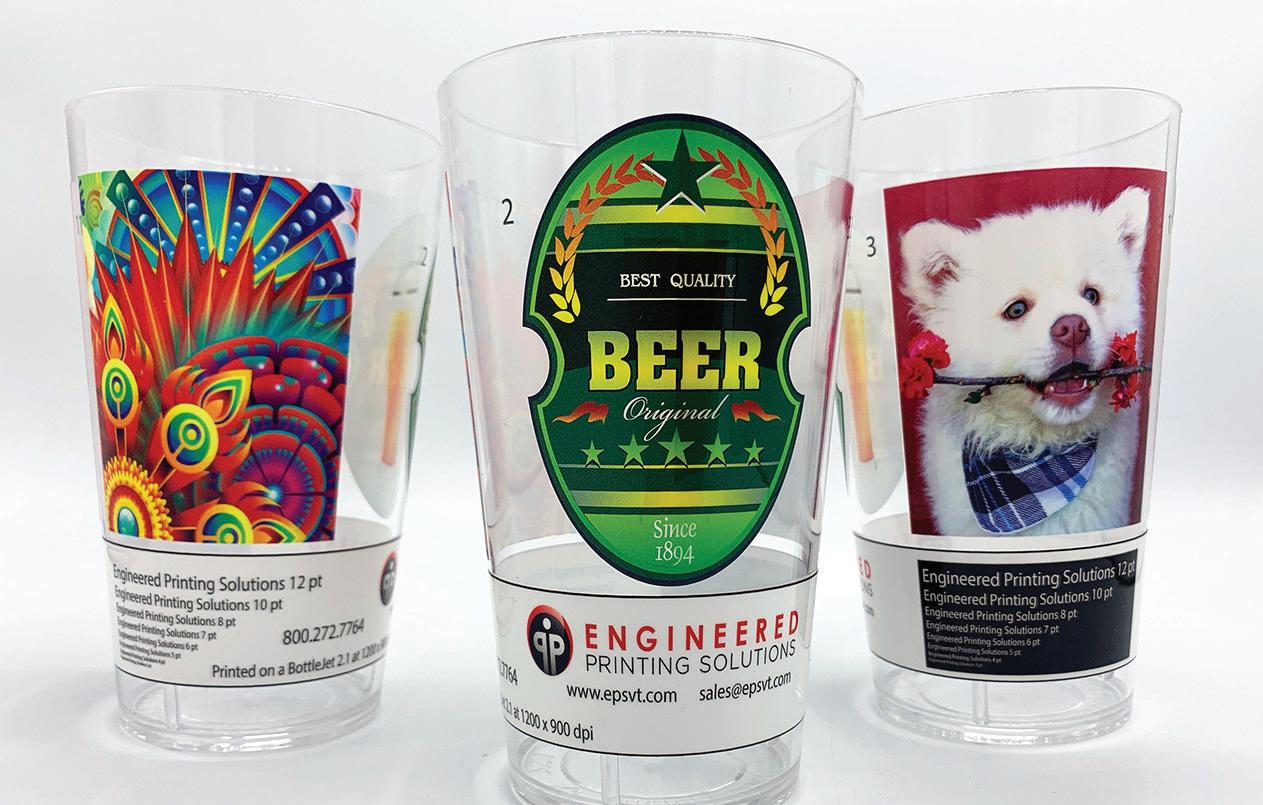
of seconds,” explains Jessica Makrinos, marketing manager, Inkcups.
“Many manufacturers are switching from labeling to direct print. Instead of investing in millions of labels, you can almost instantly change what you are printing on the bottle without worrying about old inventory. This gives manufacturers more freedom with their products,” add L. Wilson Lee, director of business development and Mark Plantier, VP marketing, Enercon Industries Corporation.
Another advantage to using digital print—reduced costs. “Traditional decorating methods, such as screen or pad printing, can be costly and require significant setup times, especially for smaller production runs. DTO digital printing eliminates the need for expensive tooling, reducing
setup costs, and increasing production efficiency. Additionally, these printers require less ink and consumables, further reducing overall costs,” says Makrinos.
DTO digital printing presents a new level of flexibility as well. “It enables quicker changeovers from one SKU to another, increasing machine uptime. This flexibility also permits products to quickly respond to seasonal or regional variations,” shares Peter Baldwin, marketing manager, Engineered Printing Solutions (EPS).
Adopting Digital
DTO digital printers in manufacturing environments is on an upward trajectory.

Makrinos cites a report by MarketsandMarkets stating that the global digital printing market is expected to grow from USD $24.8 billion in 2018 to USD $35.1 billion by 2023, with a compound annual growth rate of 7.1 percent. The report also states that packaging and label printing sectors are the largest contributors to the digital printing market, with the highest growth rate.
Part of the reason for this growth, according to MarketsandMarkets, is because digital printing technologies, including DTO printers, are well suited to the packaging industry’s requirements, such as short-run printing, customization, and fast turnaround times.
“It’s difficult to give an exact percentage of the adoption of DTO digital printers in manufacturing, as it varies across different industries and regions. However, it’s safe to say that the adoption of these printers is steadily increasing as manufacturers recognize the benefits they offer in terms of customization, speed, quality, and cost effectiveness,” shares Makrinos.
Lee and Plantier’s best guess at growth numbers, “ten to 20 percent adoption at
14 [ Industrial Print Magazine ] June 2023 industrialprintmagazine.com
1 2
1. Enercon’s Blown-ion plasma is used for either conductive or non-conductive surfaces. 2. The EPS BottleJet Cylindrical Inkjet Printer is a multi-color, UV LED, high-resolution industrial inkjet printer designed for decorating cylindrical bottles.
this point but that number will continue to grow. Along with the flexibility of changing print, the overall cost will be less in the long run.”
“In the market of decorating glass and plastic articles, I would say the adoption is in the 15 to 20 percent area. As the technology develops, I believe the percentages will continue to increase,” agrees Bolduc.
Growth areas differ by market. “In the promotional market, almost everyone we speak with has some type of DTO digital printer. In the wine and spirits market, which is more traditional, digital is in its infancy. I suspect that just as every commercial printer eventually adopted some type of digital device, the DTO space will follow,” forecasts Willis.
Despite growth, there are barriers to entry. “The initial investment cost for these printers can be high, and the technology is still relatively new, which may make manufacturers hesitant to switch from traditional printing methods,” admits Makrinos.
Accelerating the Move to Digital
With manufacturers not yet fully embracing DTO digital printing, it’s imperative that players in this space headline education about the technology’s advantages.
At Enercon, there is a movement to educate customers on the benefits of surface treatment plus printing. It works with printing companies to make sense for both sets of customers.

Inkcups plays an important role in accelerating the evolution of digital print. It is committed to educating the market about the benefits of DTO printing and how it can improve product branding, reduce waste, and improve sustainability. This includes participating in industry events, offering training and support, and sharing thought leadership content on its website and social media channels.
Koenig & Bauer Kammann takes what Bolduc refers to as the “long approach,” spending time developing solutions for
customers. “These solutions include designing better inline pretreatment solutions, testing products in our lab, and working with multiple ink suppliers to continue to develop and use the best consumables for the application.”
LSINC printers produce high-speed, high-resolution images in full color. The look and feel of samples gets even the most traditional printer interested in exploring digital technologies. The company carries multiple patents and continues to breakdown the barriers to adoption in the market.
Manufacturers looking to complement or replace traditional decorating practices have a few set standards, according to Makrinos, when it comes to implementing digital devices. These include quality, compatibility, and scalability. If these are met, the path to digital is clearer.
“The quality of DTO digital needs to be as good as or better than traditional printing methods to ensure that products look their best. DTO digital printing should be compatible with a range of materials and products to be useful for any manufacturer. It must be scalable to accommodate large production runs and meet the demands of high-volume manufacturing,” explains Makrinos.
According to Willis, “current manufacturers need assurances that customers will
accept the final product. They want to know if the ink holds up as well as their current technology. The early adopters are in a position to take market share from those that are lagging. The demand for high personalization and a ‘greener’ approach to printing are already moving manufacturers in this direction.”
Baldwin notes that DTO digital printing requires a very different skillset than older analog methods of product decoration. The prepress workflow requires graphics skills that most pad print machine operators don’t have to worry about.
Bolduc points out that while many manufacturers have dipped their toe in DTO digital printing, some have also experienced disappointments in the technology. “Many equipment manufacturers claim specifications under perfect conditions, which in manufacturing conditions cannot be met.”
“Change is always difficult to embrace but as more manufacturers become #1
industrialprintmagazine.com June 2023 [ Industrial Print Magazine ] 15
aware of the potential savings and ease of the change, more will make the investment," admit Lee and Plantier.
Stepping lnline
Pretreatment is an important part of DTO digital printing. Many times a premanufactured objectrelies onapretreatment to enhance adhesion of the ink to the surface of the item in question.
"Pretreatment is generally used in digital printing to improve adhesion between the ink and the substrate. This is particularly important for substrateswith non-porous or low-energy surfaces, such as glass or plastic, which can be difficult for ink toadheretowithout properpreparation;' explains Makrinos.
James Bullington, CTO, LSINC, says pretreatment is also used for its "ability to withstand ink fastness tests that simulate what the media needs to go through after initial manufacturing, during final finishingprocesses, shipping, or dishwashing."
There are many variations of how the pretreatment process works. It can occur near line, offline, or inline to the digital printer.
Baldwin says "throughput is the primary driver of inline solutions rather than part topography. The type of substrate is the other factor-even seemingly-specific formulations such as HDPE can have differentingredientsthataffectinkadhesion." Most of EPS' single-pass inkjet printers have some form of inline pretreatment in orderto maximizethroughput.
"Inline pretreatment is preferred because it is the best guarantee to ensure a printable surface is presented to the printer. Automation eliminates human error, improves process consistency, and boosts qualitywhileincreasingthroughput;' share Leeand Plantier.
Koenig & Bauer Kammann provides inline solutions for all of its customer applications, and for most if not all applications inline is preferred. "The reason most customers or applications consider inline is that it reduces the number of times customers must touch the article, thereby increasing manufacturing efficiencies," explainsBolduc.
According to Makrinos, inline pretreatment is generally preferred because it is more streamlined. "By applying the pretreatment solutiondirectlybefore printing, the printer ensures the substrate is properly prepared and optimized for the ink to adhere to the surface. This can result in
better color vibrancy, sharper details, and improved durabilityof theprintedimage:'
Not all printers include inline pretreatment and not all applications benefit from pretreatment applied inline. "Manymanufacturers print to multiple media types that require different types of pretreatment, which iswhyinline isn't necessarily useful;' notes Bullington.
"Whether or not inline pretreatment is necessary or preferred depends on the specific printer and the type of material being printed on. Some materials may require more extensive pretreatment than others, and some printers may be able to achieve high-quality results without inline pretreatment," notes Makrinos.
Convenience and Efficiency
ThereisatrendtowardnewerDTO digital printers running pretreatment functions inline. Having this as part of the overall processisbeneficial andcosteffective.

"With the issues of finding people, inline pretreatment eliminates extra handling. In a production situation I would considerthis a must;' admitsBolduc.
In a labor market where good help is difficult to secure, Lee and Plantier also see inline pretreatment as a huge advantage."Inlinesurfacetreatingcaneliminate primers and other manual surface preparation processes. Automation reduces labor cost and allows manufacturers to reallocate employees to higher value processes. Improved quality also increases customer satisfaction and means less quality issues and rework:'
"lnline pretreatment is a crucial step that improves print quality, reduces costs, increases productivity, and expands printing capabilities;' explains Makrinos.
Baldwin argues that "inline pretreatment is not only beneficial or cost effective but rather essential for single-pass applications where throughput speeds are high. Inline solutions also eliminate the costs associated with offline pretreatment such as labor and inventorying halffinishedgoods;'
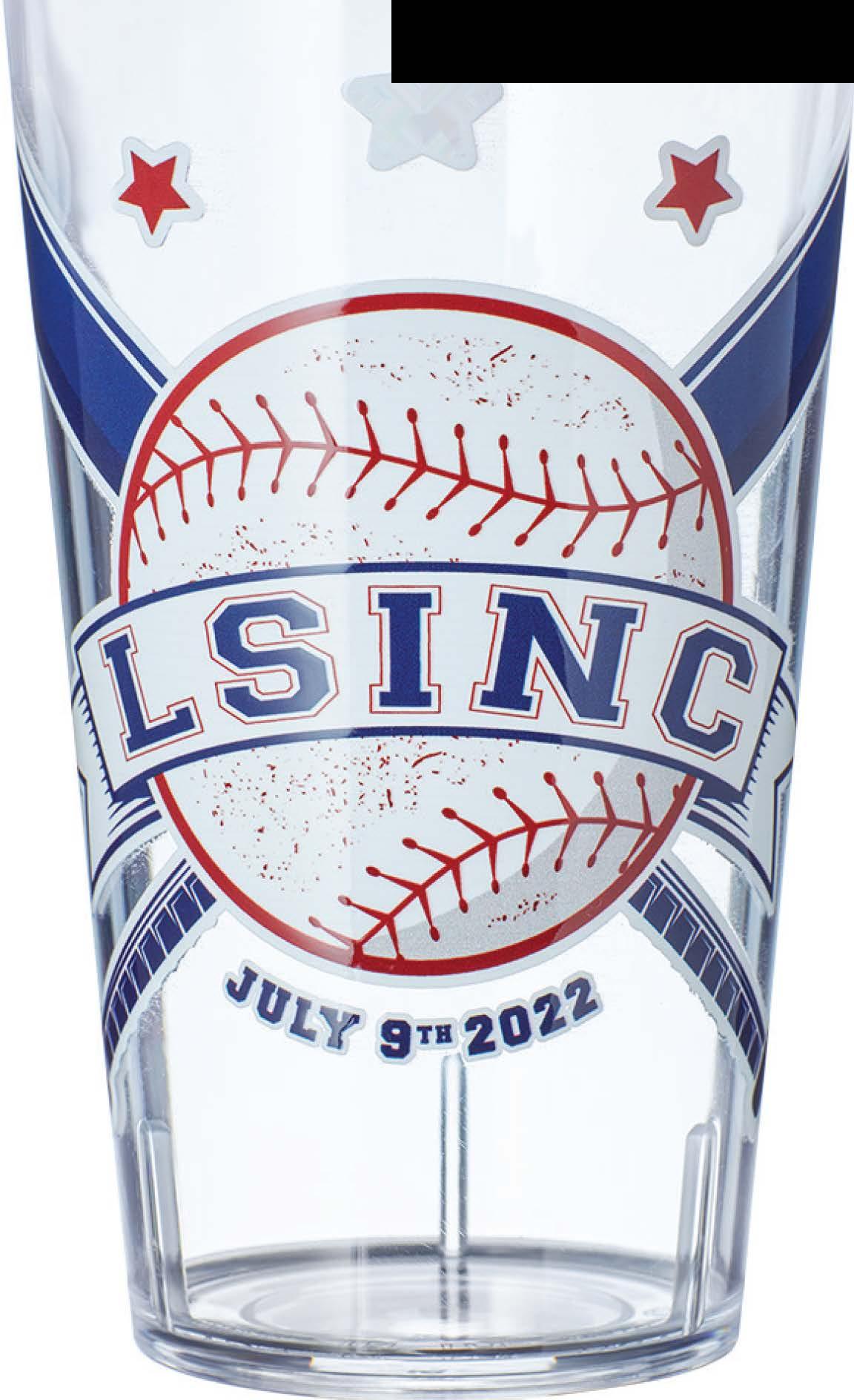
* 3
3. LSINC printers can producehigh-speed, high-resolution images in full color. 4. lnkcups' Helix printer isavailablewithinlinepretreatmentoptions.Customers are able to choose between corona, plasma, or jettableprimer.
COMPANIES MENTIONED p�seepage24formoreinformation. INFO# Company Website 150 EnerconIndustries Corporation enerconind.com 151 Engineered PrintingSolutions epsvt.com 152 lnkcups inkcups.com 153 Koenig & Bauer Kammann (US) kammann.de/en 154 LSINCCorporation lsinc.com 16 [lndustfia/PrintMagazineJ June2023
industrialprintmagazine.com
"Inline pretreatment ensures a level of consistency through better process control, which is not possible in manual application," adds Bullington.
Pretreatment Processes

Pretreatments are adhered using corona, plasma, and flame or Pyrosil processes, as well as jettable-from the printheadsprimer. The method used depends on the substrate or material being printed to, for exampleglassormetal makesadifference.
"Pretreatments such as flame and flame with Pyrosil are more often used onglass where coldendcoatingsandcontaminants need to be removed so they do not negatively effect the digitally applied ink. Corona and plasma are more often applicable to plastics where a flaming process negatively effects the structure of the media. Spray and jettable primers are used on a wider cross section of mediasincetheydonotaffectthestructureof the media," shares Bullington. A majority ofLSINC clients have chosen to utilize an inlineflamewith ajettableprimer.
Lee and Plantier explain that plasma and flame pretreatment prepare a surface by cleaning, etching, and functionalizing thesurfacetoincreasesurfaceenergyand improvewettability.Thesesurfacetreating technologies are preferred over manual and chemical processes because they do not expose workers to hazardous chemical primers, and the treating process can beautomated.
Enercon's Blown-arc and Blown-ion atmospheric plasma is often utilized in these situations. Blown-arc is used for lowerspeedlinesprintingonnon-metallic surfaces. Blown-ion plasma is for either conductive or non-conductive surfaces. NewerBlown-iontechnologies treatwider areas in a singularpasswithmore consistency than technologies that rely on a rotatingmotion.
"Both plasma and corona change the surface tension of the substrate, but in different ways. Corona uses an electrical charge to alter the surface tension,
whereas plasma uses the plasmaofa flame. Due to the nature of the two, plasma is the more powerful. Jettable primers are available to promote adhesion to a number of different substrates," notes Makrinos.
Inkcups' Helix and Double Helix DTO printers are available with inline pretreatment options. Customers are able to choose between corona, plasma, or jettableprimer.
Koenig & Bauer Kammann designs systems with all of the above-the basic consideration is the adhesion of the ink. "One other option is flame or Pyrosil, which is primarily used on glass and ceramics. Our pretreatment system using flameand Pyrosil is the K31 A-FS or K31 A-XS," says Bolduc.

Dependingonthesystem,theusermay beabletoswitchbetweencorona,plasma, flame, or jettable printer on the fly. This is advantageous for manufacturers looking to DTO digital print for decorating multiple surfaces like plastic, metal, and glass usingthe samedevice.
"Generally speaking, most printing lines rely on one specific technology for their pretreatment needs. It is possible to have multiple technologies onasingleline if needed. In most cases, these changes canbemadeinthefield.Ifyoucanprinton an item based on various geometries, the surfacetreatingportionwillalsowork,"explainLeeandPlantier.
EPS' field service technicians are able to retrofit different pretreatment methods to machines in field as end user needs change. However, "since the pretreatment method is selected during the design process, having previously tested andfoundtheidealpretreatment method as part of the proof-of-concept sampling
process, these modules are not typically designed to be user-swappable in the field," explains Baldwin.
'½!though switching betweenpretreatment systems is possible, we typically equip a machine with the most robust pretreatment system for the application and allow the customer to tum off the items that are not needed," adds Bolduc.
Pretreatments like corona, plasma, and flame are specialized stations that exist in the production line feeding the printer, according to Bullington. This meanstheycanbeturnedonoroffbased on the substrate. However, "more often than not as production speeds increase one sees that the printers are mated to production lines that feed similar media to the printer to reduce changeover times. So one is less likely to see a line that needs all types of pretreatments, and instead a line is configured around one specific type."
Maximum Efficiency
DTO digital printers and the process of running pretreatment inline maximizes throughput in a production facility. With more brands looking to offer customized options oftheir products, it makes sense to adopt this technology to meet the growth in on demand personalization.
Visit industrialprintmagazine.com to view a webinar on this topic. 1PM
industrialprtntmagazine.com
June 2023 [IndustrialPrintMagazineJ 17
ti GooenLaserVisooCutIllCIGl/lfillNIXJ advamol""11lioos.mn liSCuUMARSCarooaCl.IMQNZDlllflXl/KXXI liSCuUMARS[)Jalf'ffidCiYIBaCut GoklenlaserRegDotHigh5rmll(/

121 APLazer SN48361R apazer.c001 SN40241R SN211161R

122 ARIIIDG@intS\SleireGnW ARIIIDMATLF(/Cl/11/SL arsto.de
Ill As:oBV/SilliUSA v'.XCutti'<JTabe asmbv.c001 AXCutbr1)@ble
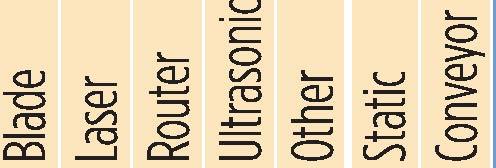
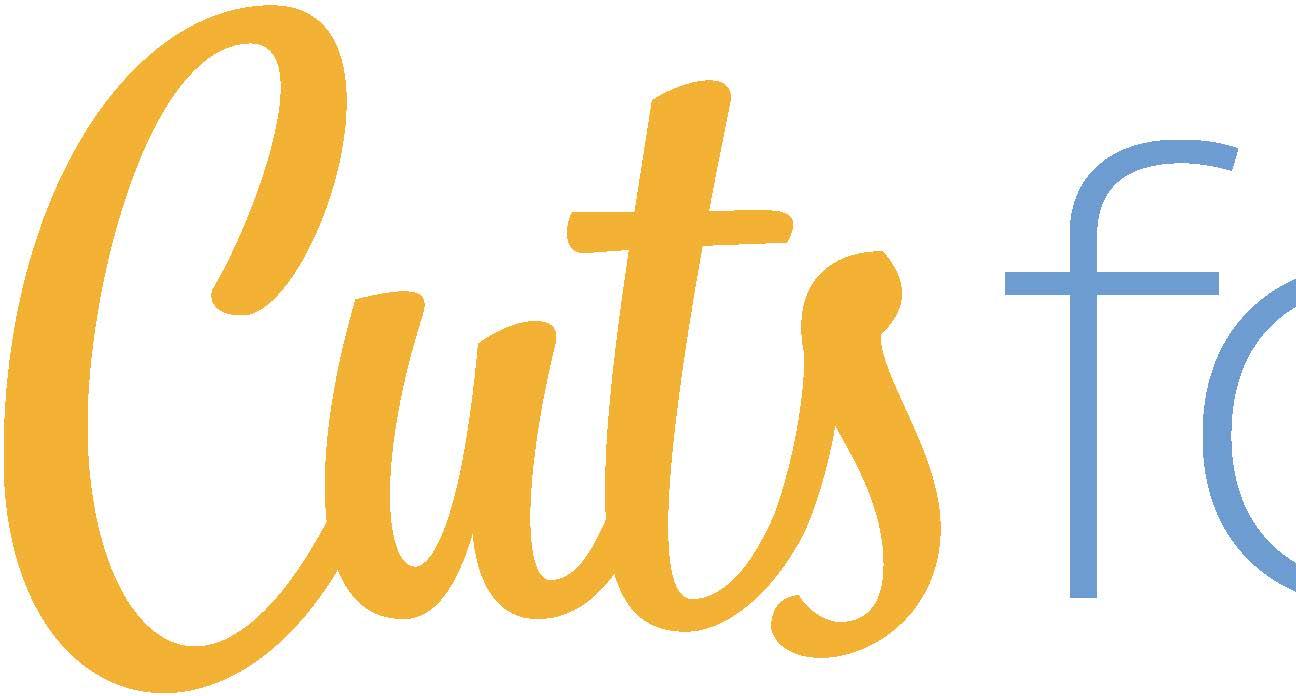
124 klystBuloo PremurriutEK ass,,llxJlm>r.co.uk TurtxJ:ut ProCutllXII
125 Aut001etnx autt:m:'irix.ccxn
126 llerreli Crystal lierreb.mn
127 coexFllishiC1Jkl:. Sharp(IJT5.'iln7 cole.x.ccm Sharp(IJTSXCln?COfM\<X Sharp(IJT"JJITI.


Sharp(IJTSXCIITI.(OfM\<X
Sharp(IJT5.'i3216
Sharp(IJTSXCl216(OfM\<X
Sharp(IJT= Sharp(IJTSXC,lSi_COfM\<X
128 Easlrra'lMa:hir,(OlflfflY EilQlems ffiSlrrIDIJls.COOl EagleSlll @kx72S @kx775
Hawkll HawkGL
12'J eurdaserGITW LCSJXL-3200 eurdaser.COOl

130 FWlsp.zo.o. CMSllOO falxna:llines.c001 (Mjl(Xl() rn FoxCCX!lIDICTI») AemnautMikrool thefoxccmm;.mn AemnautEektroo()Jattro AemnautEektrooMITTl AemnautEektrooBl AerooautEektroolaserZNeo Ill r.emLaserSpem; Optillex kernasers.c001 OptOJal EcoFex Micro
LaserCm

Flbe�ell
Ill Kongsberglm:001Clilir1)S\Slems KongsbergX �sbe�s\Slems.c001 KongsbergC
134 Loo@ lecl@COOl r.emern
GerberlXS

18 [lndustfia/PrintMagazineJ June2023
f,erberAlra GerberPa@gooLX
VectcrfashiooQOO Vern,fasliooiX VectcrfashiooiX6 AUTOMATED
✓ ✓ ✓ ✓ ✓ ✓ ✓ ✓ ✓ ✓ ✓ ✓ ✓ ✓ ✓ ✓ ✓ ✓ ✓ ✓ ✓ ✓ ✓ ✓ ✓ ✓ ✓ ✓ ✓ ✓ ✓ 5.2Sx4.l'i;Cust001 ✓ 5.25x4.2S;Cust001 ✓ Cust001 ✓ I0.5xB;Cust001 &5x6 8x5 7'/S 50 50 50 ✓ ✓ ✓ 17x24 CM ✓ ✓ ✓ ✓ ✓ ✓ ✓ ✓ ✓ ✓ ✓ ✓ ✓ ✓ ✓ ✓ ✓ ✓ ✓ ✓ ✓ ✓ ✓ ✓ ✓ ll5x2l 197 Cust001 175 16xn24 170tol'i() I0.9xll.2 170lolJI 7.04x9.6 5010150 10.SxlB 3'11 12.5'/SB 3'11 5Bx9.75 300 5'/S 5x5 5xl0 l75 5xl0 l75 1().5'/S 25() 1().5x5 250 1().5xU5 25() ✓ ✓ ✓ ✓ 1().5xl().5 250 ✓ ✓ ✓ ✓ ✓ ✓ ✓ ✓ ✓ ✓ ✓ ✓ ✓ ✓ ✓ ✓ ✓ ✓ ✓ ✓ ✓ ✓ ✓ ✓ ✓ ✓ ✓ ✓ ✓ ✓ ✓ ✓ ✓ ✓ ✓ ✓ ✓ ✓ ✓ ✓ ✓ ✓ ✓ ✓ ✓ ✓ ✓ ✓ ✓ ✓ ✓ ✓ ✓ ✓ ✓ ✓ ✓ ✓ ✓ ✓ ✓ ✓ ✓ ✓ ✓ ✓ ✓ ✓ ✓ ✓ ✓ ✓ ✓ ✓ ✓ ✓ ✓ ✓ ✓ ✓ ✓ ✓ ✓ ✓ ✓ ✓ ✓ 14xl6;Cust001 16.5xllll;Cust001 6.5x5.5;Cust001 6.5x5.5;Cust001 6.2Sx82 6.25x&2 1().5xU5 IOxB.5 9x8.5 5x8.5 llx200 llx200 llxBO llx200 7x12;Cust001 7xll;Cust001 4x8;Cust001 2x4;Cust001 4x4 4x4 7.4ill.7 I0.9xl7.4 5.9x5.9 �BxllO 7.2x5.9 7.2x5.9 7.2x5.9 5.2x6.5 8.lxS.6 7.2x5.6 7.2x5.6 8.lx5.6 7.2x5.6 3,flXJ 3,flXJ 3,flXJ 3,flXJ CM CM 278 4'11 4'11 HJ HJ HJ CM HJ 100 100 50 50 100 100 164 328 Z95 225 )S)_ 252 )S)_ 394 197 197 mi_ ✓ From$69,995 ✓ From$l9,995 ✓ From$49,995 ✓ Fr001�19,995 ✓ ✓ ✓ $48,595 ✓ ✓ ✓ $35,595 ✓ ✓ ✓ $26,595 ✓ ✓ ✓ ✓ ✓ ✓ ✓ ✓ ✓ ✓ ✓ ✓ ✓ ✓ ✓ ✓ ✓ ✓ ✓ ✓ ✓ ✓ ✓ ✓ ✓ ✓ ✓ ✓ ✓ ✓ ✓ ✓ ✓ ✓ ✓ ✓ ✓ ✓ ✓ ✓ ✓ ✓ ✓ ✓ ✓ ✓ ✓ ✓ ✓ ✓ ✓ ✓ CM $7l,IXXI $75,IXXI CM CM CM CM CM CM CM CM CM CM CM CM CM CM CM CM CM CM CM CM CM CM CM CM CM CM CM CM CM CM CM CM CM CM CM CM CM CM CM CM CM CM CM CM CM CM CM industrialprintmagazine.com
f,erberPa@QOOHX Virgafashioo VectcrfmonQ25 Vern,fashioo!li()
CUT


industrialprintmagazine.com June 2023 [ Industrial Print Magazine ] 19 Cut Technology Table Type Max. Working Area (WxL, feet) Cut Speed (feet per minute) Automatic Fabric Feeder Thickness INFO# Company Name/WebsiteProduct Name Blade Laser Router Ultrasonic Other Static Conveyor Single-Ply Low-Ply High-Ply Pricing ($ U.S.) 134Lectra, continued Vector Fashion iX9 3 3 7.2x5.6 262 3 CM Lectra.com Vector Lingerie iX6 3 3 7.2x5.6 262 3 CM Vector Denim iX6 3 3 7.2x5.6 262 3 CM Vector Footwear iX 3 3 8.3x5.6 262 3 CM Vector Footwear iX6 3 3 7.2x5.6 262 3 CM Vector Footwear iP6 3 3 7.2x5.6 262 3 CM Focus Quantum OPW (Airbags cutting) 3 3 9.8x3.3 590 3 CM Focus Quantum Flat (Airbags cutting) 3 3 9.8x3.3 590 3 CM Vector Automotive iQ50 3 3 7.2x5.6 197 3 CM Vector Automotive iQ80 3 3 7.2x5.6 197 3 CM Vector Automotive iX 3 3 8.3x5.6 262 3 CM Vector Automotive iP6 3 3 7.2x5.6 262 3 CM Vector Automotive iP9 3 3 7.2x5.6 262 3 CM Vector Automotive iX6 3 3 7.2x5.6 262 3 CM Vector Automotive iX9 3 3 7.2x5.6 262 3 CM Virga Furniture 3 3 5.2x6.5 394 y 3 CM Vector Furniture iX 3 3 8.3x5.6 262 3 CM Vector Furniture iX6 3 3 7.2x5.6 262 3 CM Vector Furniture Q25 3 3 8.3x5.6 197 3 CM Vector Furniture iQ50 3 3 7.2x5.6 197 3 CM Vector Furniture iQ80 3 3 7.2x5.6 197 3 CM Vector TechTex Q25 3 3 8.3x5.6 197 3 CM Vector TechTex iX 3 3 8.3x5.6 262 3 CM Vector TechTex iQ50 3 3 7.2x5.6 197 3 CM Vector TechTex iQ80 3 3 7.2x5.6 197 3 CM 135 Matic S.A Helios Plus 3 3 16x10300 Y 3 CM maticmachines.com Helios 3 3 10x26198 Y 3 CM Flexicut 333 16xCustomCM N 3 From $17,000 M1 33 10.5CM Y 3 CM 136 Morgan Tecnica Spa PLY 1 3 33 CustomCM Y 3 CM morgantecnica.com Next 2 30 3 3 CustomCM Y 3 CM Next 2 ES - 50, 70, 90 3 3 CustomCM Y 33 CM Next 2 PRO Delta, 50, 70, 90 3 3 CustomCM Y 33 CM Next 2 PRO Delta Lingerie 50 3 3 CustomCM Y 33 CM Next 2 Pro Delta Denim 70 3 3 CustomCM Y 33 CM 137 MultiCam Inc. Celero 4 33 3 10.5x6.5333 N CM multicam.com 138 Pathfinder Cutting Technology M-Series 3 3 12xCustom177 Y 333 CM pathfindercut.com L-Series 3 3 10.5xCustom236 Y 33 CM 139 SEI Laser Mercury Conveyor 3230 (3215, 2530, 2040, 2030, 1530, 1520) 3 33 10.5x9.8; Custom 400 Y CM seilaser.com Flexi 1300 TEXTILE 3 33 4.3x4.3; Custom 1,200 Y CM Matrix TEXTILE 1600 3 3 6.6x6.6; Custom 1,200 Y CM NRGL Conveyor 3232 (3220, 3215, 2215, 1612) 3 33 10.5x10.5; Custom 300 Y CM X-Wave Conveyor 1600 3 33 5.2x4.9 790 Y CM H-Type Conveyor 3 33 3.3x2.4 390 Y CM 140Summa L1810 3 3 5.9 197 Y 3 CM summa.com L3214 3 3 10.8295 Y 3 CM F3232 3 3 10.8CM Y 3 CM F1832 3 3 5.9x10.5CM Y 3 CM 141 Trotec Laser SP3000 3 7.25x10.5 390 N 333 CM troteclaser.com SP2000 3 5.5x8.2 390 N 333 CM SP1500 3 4.9x4.08 324 N 333 CM SP500 3 4.08x2.3 390 N 333 CM 142 Yin USA Inc. HYHC Series 3 3 12.95x10.49196.85 Y 333 From $90,000 yinusainc.com IC2516 3 3 5.25x8.2 262 Y 33 $89,400 Laser Cutting Machine YL-CMA1814C-DFV-A 3 3 5.47x3.77118 Y 3 $58,900 143 Zünd Zünd G3 series 3333333 10x10 150 to 275 Y 33 CM zund.com Zünd S3 series 333333 7.5x4 150 to 275 Y 33 CM Zünd D3 (dual-beam) series 33333 10x10 150 to 275 Y 33 CM KEY: CM = Contact Manufacturer #5


�':!!'-� f13/1/11Jlimj,l11iffi SOUTHERN FLAVOR SO\l1\\E\\� FLAVOR
times are becoming shorter-all impacting production. Planning complexity, the circular economy, and food safety requirements for packaging are other factors," explains Chuck Slingerland, corrugated sales manager,Durst US.
Many substrates/materials are used in packaging. Corrugated in particular is still primarily printed using conventional technologies, but uses single-pass digital printers. Complemented by automated handling systems to maneuver heavy stacks of corrugated materials, converters and printers adopt these processes as they are both cost-effective and accessible methods of production.
Instrumental for Corrugated

Single-pass digital printers are instrumental for today's converters and printers involved in corrugated.
shipping.With digital printing,job set up and changeovers are executed in minutes, and the first sheet is sellable with minimal waste compared to traditional analog printing," explains Slingerland.
Sometimes these implementations are a collaborative effort, combining digital with analog technologies like flexography, which makes for a hybrid method.
There is increased demand for vivid "Incorporating hybrid, single-pass techdesigns on packaging, something singlepass digital printers can deliver.
According to Adi Shorer, product and marketing manager, HP PageWide Industrial, Post-Print, "digital print enables converters to provide highquality packaging that excites consumers. Whether it's detailed and personalized designs on shoe boxes or food and beverage packaging that excites on storytelling, the agility and flexibility of digital print enables innovative brand campaigns that excite consumers and ultimately, boost engagement."
"Single-pass digital printing increases a converter's output of high graphic corrugated packaging without the sourcing and waste associated with lithographic laminated labeling or the high cost of flexographic printing plates.The abilityto go from file to print enables just-in-time
nology offers cost savings and increased margins, higher quality ofprint, especially solid colors, and the ability to offer customers high graphic printing without the high investment and operator skill level needed for most analog machines offered today," explains Lloyd Kent, VP sales and operations, KentoNorth America.
Digital is advantageous for sustainability reasons. According to the Markets and Markets report, "unlike conventional printing, digital printing does not use film plates or photo chemicals, which eliminates the prepress stages between the digital document file and the final print. Furthermore, digital presses do not emit harmful emissions. This eases their overall energy consumption."
In regards to the EFI Nozomi digital single-pass printer for example, "this technology passed a variety of certifications
including but not limited to the Fogra certificate on energy consumption, which states that this machine uses up to 30 percent less energy than other equipment, and the OCC certificate of repulpability and recyclability by Michigan University;' adds Jose Miguel Serrano, global business development director packaging, EFINozomi.
Making Progress
We are at the tip of iceberg when it comes to the adoption of single-pass digital printers in corrugated converting environments/print shops.
"The first digital single-pass postprint presses for corrugated were introduced to the market in 2016, generating interest but a lot of suspicion from the traditional industry," notes Shorer.
Based on research by EFI as well as by analyst firms such as LT. Strategies, InfoTrends, IDC, ICCI, and FEFCO, Serrano expects a global business opportunity of $176B in output value, and approximately 2,700 billion square feet printed. Less than one percent of this is digital today.

industrialprtntmagazine.com
June 2023 [IndustrialPrintMagazineJ 21
1. ZUnd raises the bar for industrial, pallet-to-pallet production with the new Q-Line with BHS180 Board HandlingSystemandUNDERCAM.
"We have seen our customers' businesses grow by more than 80 percent year over year. This shows us that digital adoption is significantly increasing as more converters discover and embrace opportunities that come with single-pass digital print," he continues.
Slingerland notes that over the last six years, single-pass printing has transitioned from early adoption to a fully accepted print production method because of evolved ink jetting technologies, increased resolutions, as well as increased printer reliability and technical uptime.
"In order to be competitive and offer similar print solutions, more converters
2. TheElitronKomboTAV-Ris afullyautomaticcutting plotter with integrated loading, cutting, and unloading system for packaging and display. 3. The DurstDeltaSPC130canbeconfiguredwithuptosix colors, printing any length of corrugated cardboard or papermedia ofupto 12 millimeters inthickness.


will add single-pass printers to their portfolio of solutions. The cost per click and consumer packaged goods brands continue to embrace singlepass printing as it adapts to smaller minimum order quantities, regionalization of packaging and campaigns, and increased package graphic changes," continues Slingerland.
Despite growth, Kent says that under 0.5 percent of worldwide corrugated production is handled via digital print. The reason-the cost of digital ink.
"Hybridtechnologyallows for hugeink savings, up to 80 percent, which means more business can move to single pass, adding to the bottom line and enhancing a machine's return on investment (ROI)," continues Kent.
WhatWillitTake?

Accelerating the evolution of single-pass digital corrugated printing takes education in many forms. It is through instruction and real world success stories that corrugated converters and printers learn to embrace single-pass digital printing. Each vendor offering solutions in this space is playing a part in the growth.
Durst provides printers with a detailed total cost of ownership calculation to help embrace the change of singlepass printing as part of their processes. It offers transparent production data driven by Durst Analytics. As an established North American service and parts organization, including domestic ink manufacturing, Durst allows a converter to make a more technical and financial decision to grow their business.
"It is very important that converters understand the business model and what it takes to be successful in digital production. With that in mind, we offer all sorts of training to ensure our customers maximize digital production opportunities. This ranges from sales, marketing, and operator training right through to ink optimization. Our success is our customers' success. From pre- to post-press, building digital volumes is something we achieve in partnership with our customers who really appreciate our support and expertise," shares Slingerland.
EFI's expertise in industrial digital printing, its broad install base of singlepass equipment, and its history of innovation make it an ideal consultative technology provider for converters making the move to digital corrugated packaging production.
"Corrugated converters/printers have already embarked on the journey to adopt digital solutions. We believe that if a converter sees the business opportunity enabled by this new technology, and, at
22 [lndustfiafPrintMagazineJ June2023
4. The Nozomi 14000 LED printer is EFl's second generation of digital corrugated printers and fifth generationofhighproductivitysingle-passindustrial printers. 5. BlandFarmswasthefirstcompanyinthe industrytomarketsweet onionsyearround. Itrelies on its corrugated display printing partner, Complete Design and Packaging, to print quality graphics on corrugatedusinganEFI Nozomisingle-passpress.
industrialprintmagazine.com
the same time, is realistic about the investments it requires-in terms ofadjusting workflows and managing print loads in a different way, but also looking and testing new applications-this will help tremendouslyin the decision making process," explains Serrano.
by AI and/or robotics become part of the process to keep pace with the speeds single-pass printers reach.
HP partners closely with brands to help them understand the possibilities with digital print. It works directly with converters to analyze their production and evaluate the overall cost and time reduction, which can later be turned into increased capacity.
Personally, Shorer believes that for more to embrace single-pass digital printing, it is a "combination ofbrand demands and the understanding that the financial model should be calculated end to end and not just compared ink cost to ink cost. What we often hear is that

''Automation is the driving force in making every aspect of digital production more efficient and profitablewith material handling being a big part of that. No matter whether in printing or cutting/finishing, if there is anything impeding the flow of materials that keeps your printer or cutter operating non-stop, you are not getting as much ROI as you should on 'digital ink is too expensive compared to your equipment. And flexographic inks.' This is indeed a true naturally, the faster the 5 statement, however comparing end-to- printer-with singleend costs, including plates, warehouse, waste, water, and labor shows that digital has an advantage over traditional printing and not just in hundreds ofcopies, but in thousands."
Kento North America is "removing the cost barrier that has been a major drawback for so many by providing a hybrid solution, along with an open ink system," explains Kent. "Add to this upgradeability, rotary die cutting, and even two-sided print and many now realize that single pass no longer means only digital print."
Robotics in Play
AI and robotics are used in manufacturing facilities of all types, and corrugated converters/print shops are no exception. With large, heavy pallets processed daily it seems only fitting that automated material handling powered
pass capabilities-the more likely it will create bottlenecks downstream," attests Beatrice Drury, marketing and communications manager, Zund America, Inc.
Automation in materialhandling was once unattainable, according to Kent because of "cost and space requirements due to the custom requirement of pre-feeders. Few manufacturers offer a sheet size that works with standard prefeeders and stackers.''
However, as technology advances, larger runs are processed with digital print. "These higher run jobs now bring
the automation and this can be a game changer for many plants," explains Kent.
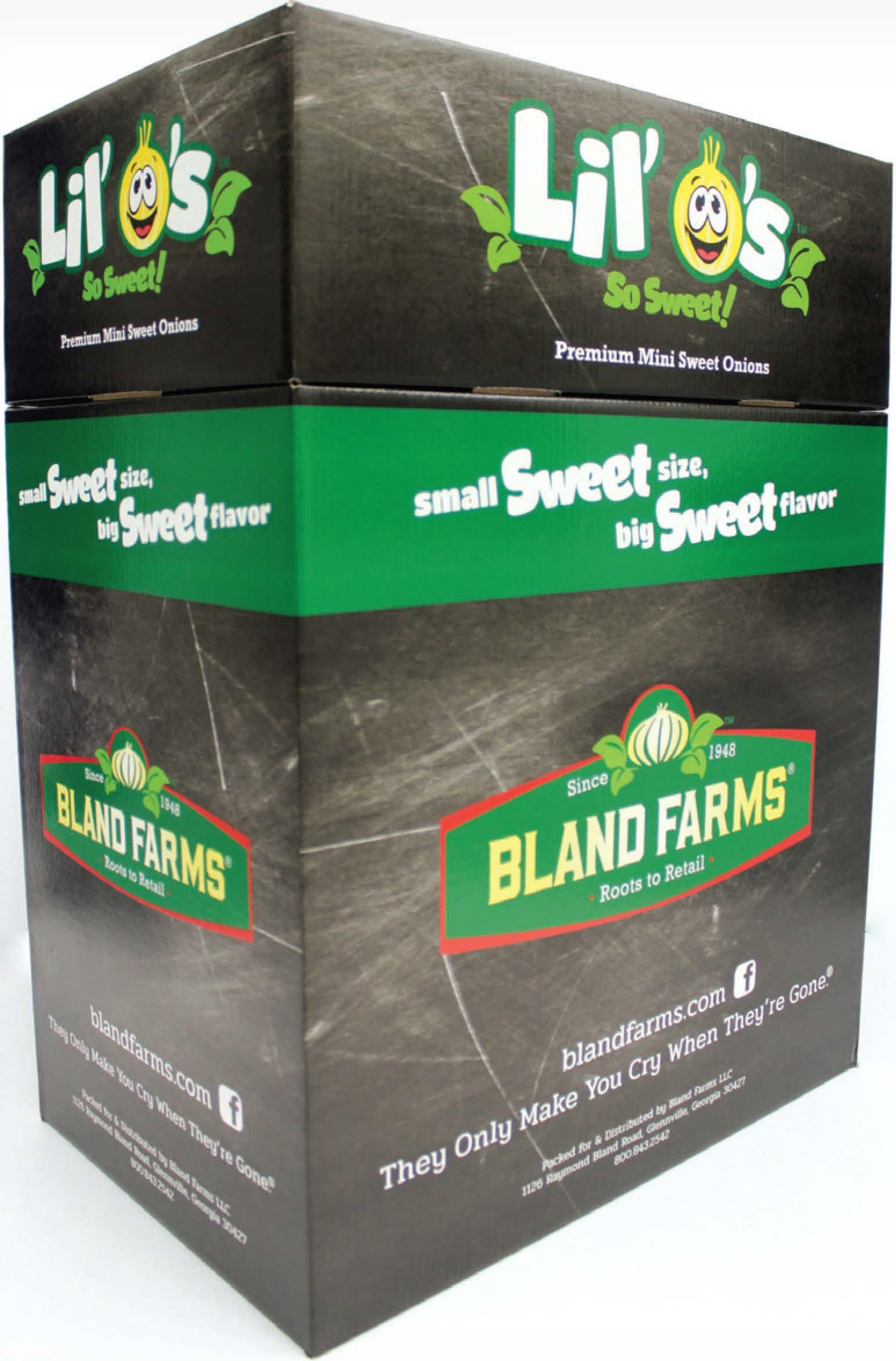
"Reducing human touch points is key," seconds Slingerland. Material handling devices like continuous feeding and stacking systems must be automated, efficient, and accurate. "This is particularly important when industrialscale digital production involves huge amounts of separate jobs that all need to be processed and loaded for delivery to customers fast.''
Serrano agrees that "adding robotics to feed materials into the printer or taking it out of the stacker for further
into the equation the need for more au- processing is a vital step in the overall tomation at the front and back end. Add manufacturing process."
--.- I .., � -,,,,,,,,. ' industrialprtntmagazine.com - - --.... CO M PAN ES M ENTI ONED P�Seepage24formoreinformation. INFO# Company Website 111 Durst US durstus.com 112 EFI efi.com 113 Elitron elitron.com 114 HP Inc. ho.com 115 Kento North America kentodigitalprinting.com 116 ZundAmerica, Inc. zund.com June 2023 [IndustrialPrintMagazineJ 23
Increased Demand
Single-pass digital printing for corrugated increases demand for automated material handling systems.
Caroline Bell, marketing coordinator, Elitron, admits her organization has experienced increased demand for automation in relation to the growth in single-pass printing. "We now offer many different levels of automation, based upon individual production requirements. Workflow can be upgraded as production levels increase and extra automation-loading, unloading, sheet turning-can be added as required."
''Absolutely," seconds Drury. This is why Ziind launched its dual-beam QLine with BHS180 board handling automation, designed specifically for the corrugated market. With robotic board feeding and offloading/stacking systems, in conjunction with UNDERCAM scanning, the system is fully configured for largely unattended, pallet-to-pallet processing of six-foot stacks of printed corrugated board.
According to Slingerland, "the corrugated market is volume driven and

high production output is standard." Some of Durst's customers' plants are completely automated, with most of the material handling mechanisms integrated directly into customer logistics.
"This ability to run larger job lengths converters will desire to add automation where it makes sense so the single-pass machine of choice needs to marry up to standard automation machinery, taking up as little space as possible;' shares Kent.
At Scale
Converters/printers need to adopt automated material handling mechanisms at scale and ensure implementation is done both safely and effectively.
Most converters or printers have adopted automation in other forms before. "For those who do desire to add automation, they will do this as they have with other machines throughout their plant, assuming their single-pass machine has the right format size to support standard automation machinery," advises Kent.
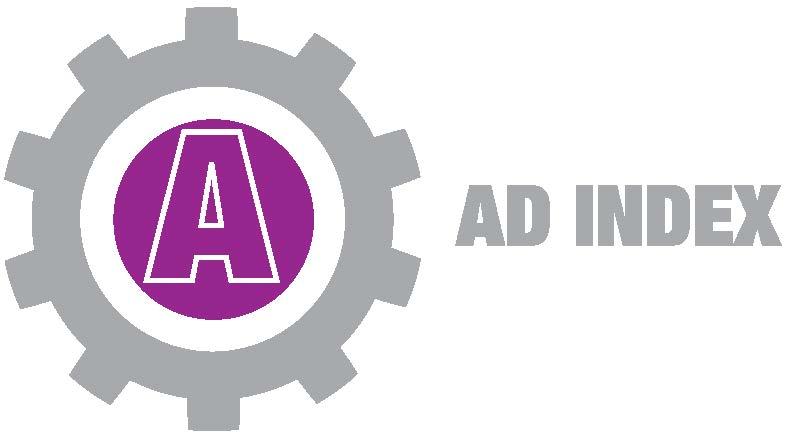

Safety mechanisms like fences and light curtains enablesecure environments and eliminate risks, says Slingerland.
"Elitron fully trains operators so that they can operate all of our systems. We naturally address safety issues during training and explain the safety systems in place to ensure the safety of all within the production site," shares Bell.
Another example, the new Ziind cutting system. "The speed and scale of the Ziind Q-line with BHS180 necessitated developing a sophisticated safety system with components ranging from light barriers/curtains to retractable glass shields preventing access to the working area-without obstructing the view, as well as safety fencing surrounding the load/offload areas," explains Drury.
Just the Beginning
Single-pass digital printers and their automated material handling counterparts are increasingly necessary for corrugated converters and printers. They check all the boxes in terms of meeting packaging trends and sustainability efforts. We are at the beginning of adoption, with manufacturers and industry leaders taking the helm to educate on the advantages of these worthwhile technologies. /PM
Get more information from vendors appearing in this issuei Visit IPMagdirect.com. -PJVldirect With just a few clicks, order FREE information from dozens of companies covered '\ in this issue. AD INDEX MarabuNorth America 2 Mutoh America, Inc. Si ns365 COMPANIES MENTIONED Company INFO# CanonSolutionsAmerica 145 Durst US 100 Durst US 111 EFI 112 Elitron 113 24 [lndustfia/PrintMagazine] June2023 .,. 15 12 28 Company INFO# Enercon Industries Corooration 150 Enqineered Printinq Solutions 151 Epson 146 EasonAmerica, Inc. 101 HPInc. 114 4 ZundAmerica, Inc. 5 ZundAmerica, Inc. Company INFO# lnkcuos 152 lnkTec 147 KentoNorth America 115 Koenia & Bauer Kammann !US) 153 Kornit Diqital 102 2 zund.com 19 zund.com Company INFO# LSINCCorooration 154 Optimum Diqital USA 103 SPG Prints 104 Zund America, Inc. 116 Zund America, Inc. 148 industrialprintmagazine.com


We expect continued growth in water-based inks for digital textile printing.
Environmental Benefits
Water-based textile pigment inks are known to help reduce energy as well as water consumption, particularly when pre- and post-treating fabrics compared to other digital textile print options.
''According to theWorld Bank, the textile industry is responsible for approximately 20 percent ofindustrial wastewater worldwide. Based on a recent study by the Fuluhashi Environmental Institute, it was found that digital printing textiles with pigment inks can reduce the water used by up to 96 percent versus dye-based alternatives," states Mark Krzywicki, product manager, Professional Imaging, Epson America, Inc.
Ofthe many ink sets involved in textile printing, Sharon Donovich, marketing
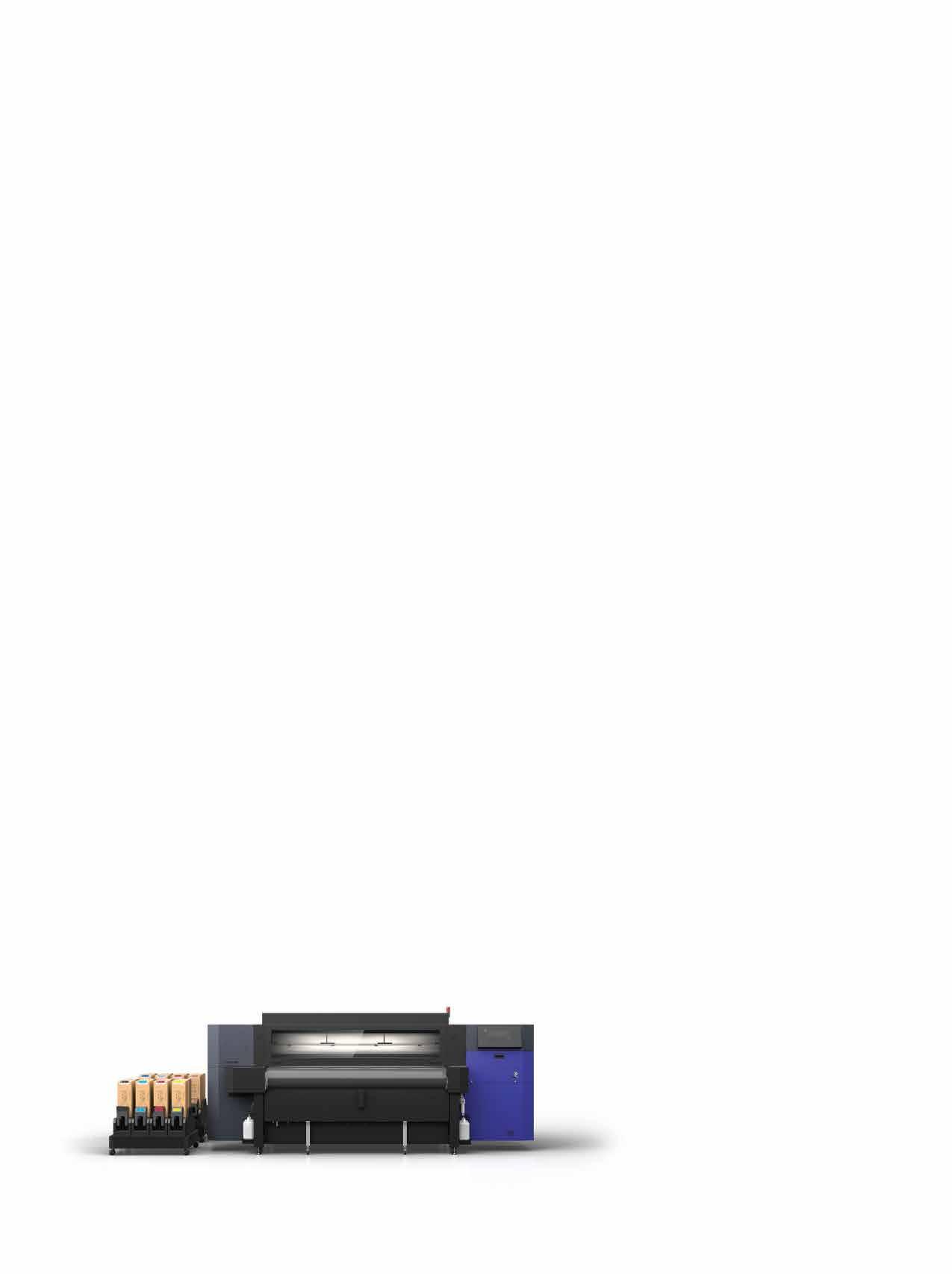
director, global events and customer success, Kornit Digital, says pigment ink sets, without doubt, present the smallest effect on the environment. "Reactive, disperse, and acid inks are water- and energy-wasteful, while dyesublimation (dye-sub) printing throws away as many meters of paper as it prints on textiles. By comparison, conventional pigment screen printing uses 50 percent less water, 30 percent less energy, and 35 percent less water pollution than other ink sets."
Setting or fixating these inks only requires a dry heat fixation to cure the ink once printed-eliminating the use of steaming or washing seen in traditional methods. "Having this single-step solution eliminates the excessive use of water as a resource, as well as toxic waste water as a byproduct of production," explains Edward Knight, partner, Optimum Digital
USA It also requires less power by removing the need for other machinery.
Ifyou add all ofthese factors together with the inherent benefits ofdigital printing technologies, which do not require the production of large minimum order quantities to be competitively priced, the advantages increase. "Our customers print on demand, significantly reducing the chance that the fabric is thrown into a landfill-currently up to 60 percent in the apparel manufacturing supply chain," remarks Knight.
Donovich points out that Kornit's pigment ink is free of pretreatments, steaming, and washing, enabling lessened consumption and waste. "In accordance with Environment Health & Safety policy we dispose of effluent at the cycle's end as hazardous material separately from the municipal system. Process water undergoes a short softening cycle before use."
Versatility
Further, recent developments ofpigment inks for digital printing on textiles are changing the way the industry prints on synthetic, natural, and blended fabrics, according Taner Can Guven, partner, Optimum Digital USA.
As an ink type, Donovich points out that pigment printing is versatile, because, unlike any other ink set, it can successfully print onto any fabric of any fiber composition using one process.
Donovich explains that pigment printing relies upon the strength of an ink's binder to lock the pigment particle to the fabric, while other ink sets use tailored chemical bonds that only work with one fiber type or another. "It is therefore the only ink set that is effective across all known fabric and fiber types."
Application Options
Water-based pigment textile printing serves a range of applications, from apparel to decor. The technology is being adopted by textile print service providers (PSPs), rotary screen printers in a

• EPSON r ,ZJ ca:, l 2 26 [lndustfiafPrintMagazineJ June2023
•l MonnaLi<.>8000
industrialprintmagazine.com
hybrid print environment, as well as PSPs serving the sign and display market. 3
Durst US customers pigment print onto textiles to produce upholstery, window dressings, table and bed linens, apparel, and wallpaper, according to Mike Syverson, textile manager, North America, Durst US.
"We see most customers using Monna Lisa GENESTA pigment ink printers today focused on the home decor and craft markets," agrees Krzywicki. "However, there is an increased use in the fashion market as more designers and customersare lookingfor technologysolutions to reduce water use."
Can Guven and Knight predict apparel manufacturing as a large growth area. "Customers previously limited to a single type of fabric-like polyester-are now using ourmachines to produce ona wider range offabric."
For example, Optimum Digital has customers using eco-pigment that range from women's apparel, baby products, sportswear, leisure wear, and pajamas. "Thehomedecorspaceisalso increasing with the ability for customized upholstery and interior designs on natural linens and cottons, albeit at a slower rate."
COMPANIES MENTIONED
"The adoption of water-based pigment inks in textile printing is largely affected by the way the textile industry operates," explains de Brouwer. "When looking at the entire textile chain, one can conclude that fashion brands have a lot of power and are driving changes also related to sustainability. Sustainability is considered an important factor in the whole value chain.Just look at the fact that several global brands have appointed a chief sustainability officer in their boardrooms."
A variety ofcustomers are interested in pigment ink printing technology due to the comparatively simple workflow whencomparedto dye-based inks, along with the aforementioned water savings benefits, offers Krzywicki.
The Fabric Component

Whenprintingtotextiles, thefabricitself is a primary consideration.
For water-basedpigment printing processes, a key benefit of pigment printing issubstrateflexibility. "Usingpigmentink you can print on an array offabric types, including blended fabrics. At Epson, we have designated Solution Centers around the globe to help customers test new fabrics to evaluate print quality and performance," shares Krzywicki.
Donovich also stresses the process' versatility when it comes to the range offabrics it can successfully print onto.
-P� Seepage24formoreinformation. Website durstus.com epson.com/usa kornit.com optimumdigitalusa.com soaorints.com
"Unlike any other ink set it can successfullyprintontoanyfabric, ofanyfibercomposition, usingoneprocess;' she explains.
"Generally, we see most companies printing pigment on natural fabrics like cotton, linen, and wool, although it is possible to print with pigments on other materials such as polyester, silk, and acrylics," says Syverson.
Can Guven and Knight see the most success with cotton and cotton blends, and state that linen also works verywell. "The great thing about pigment-based inks is the versatility and high quality across a wide selection offabrics."
De Brouwer adds that fabric compatibility in essence is very wide, but influenced by the pretreatment used. "Our experience is that in today's industrial textile printing environment pigment ink is mainly used with polycotton fabric. In a lesser degree also 100 percent cotton for garment decoration is utilized."
Sheadmitsthatpigmentinks are not yet suitable for use with silk. ''Also, the ink lies on top ofthe substrate and does not penetrate the whole fabric. This means pigment ink cannot be used in two-sided applications such as scarves."
Expanding Options
The move to pigment ink printing, versus dye, is an area to watch when it comes to digital textile printing. We expect the expansion of capabilities to expand and adapt to the modern needs oftoday's consumers.
"The current range offabrics to print with pigment-based inks is already the most varied in the digital printing space and I believe it will continue to grow," concludes Can Guven. /PM
 1. Kornit's Presto MAX is a direct-to-fabric solution.
2. Epson launched the Manna Lisa 8000 in 2022, an industrial direct-to-fabric printer for the North American market. 3. In 2022 Optimum Digital debuted the Nirvana Belt eco-pigment series, an industrial onestep direct-to-fabric printing solution without need for pre- or post-treatment, which is now available in North AmericathroughitsAtlanta, GA offices.
1. Kornit's Presto MAX is a direct-to-fabric solution.
2. Epson launched the Manna Lisa 8000 in 2022, an industrial direct-to-fabric printer for the North American market. 3. In 2022 Optimum Digital debuted the Nirvana Belt eco-pigment series, an industrial onestep direct-to-fabric printing solution without need for pre- or post-treatment, which is now available in North AmericathroughitsAtlanta, GA offices.
INFO# Company 100 Durst US 101 Epson America, Inc. 102 Kornit Digital 103 Optimum Digital USA 104 SPG Prints industrialprtntmagazine.com
June 2023 [IndustrialPrintMagazineJ 27





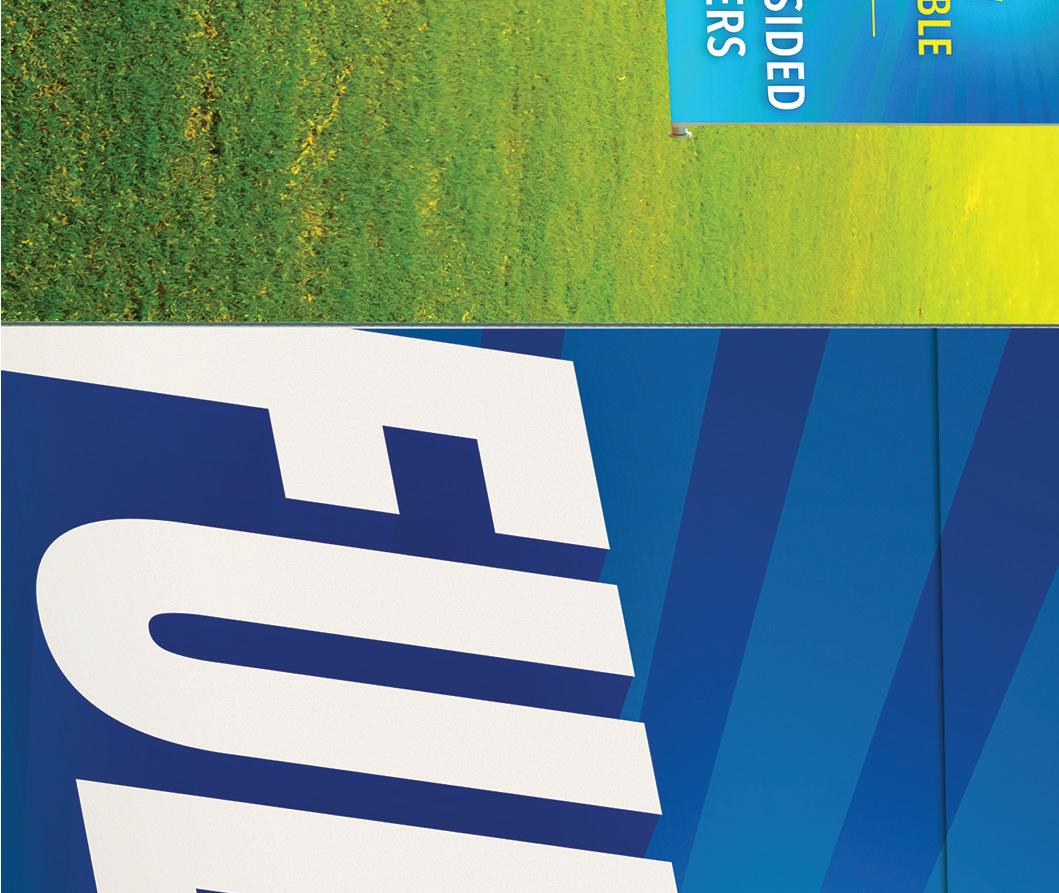
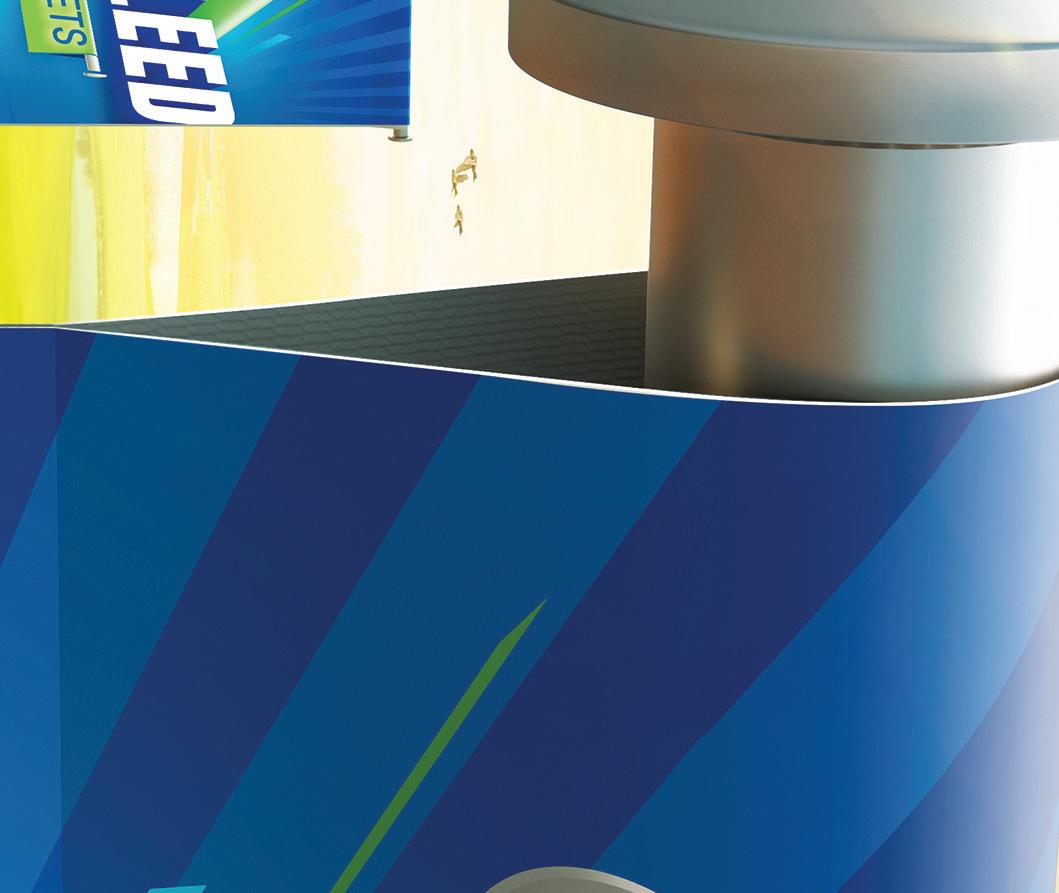




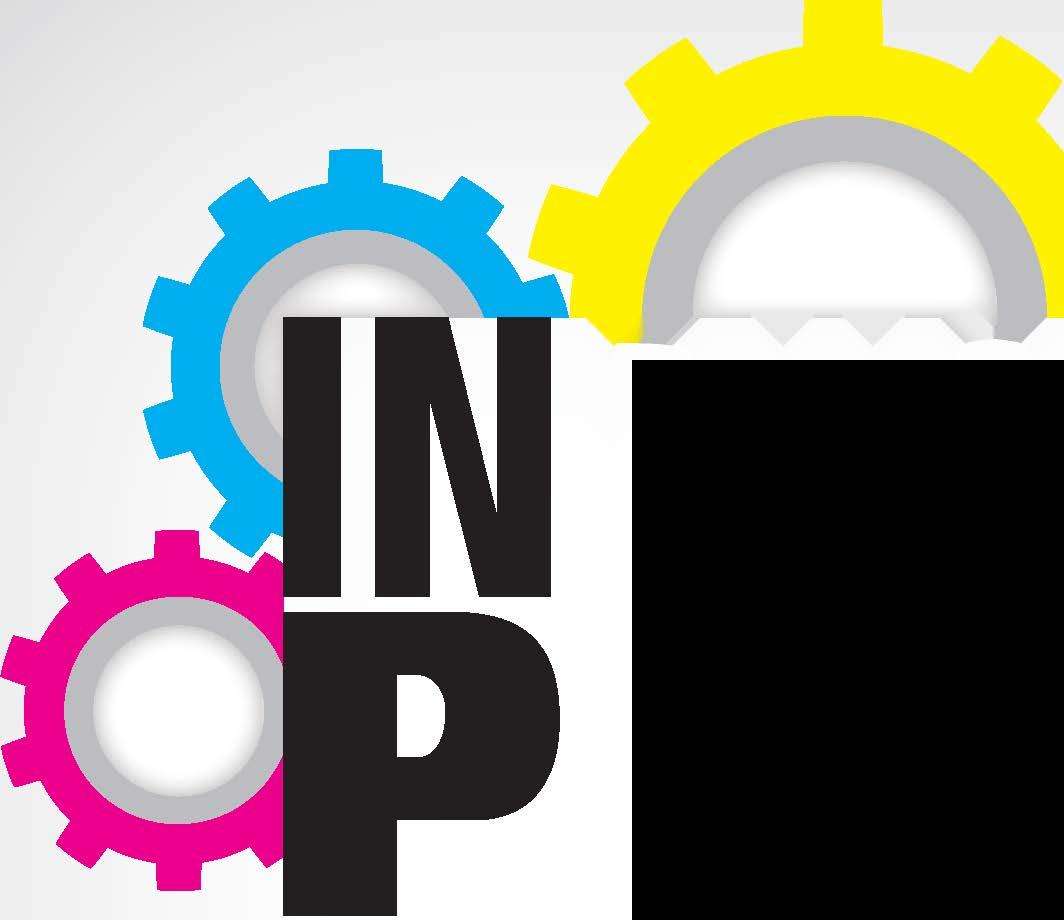


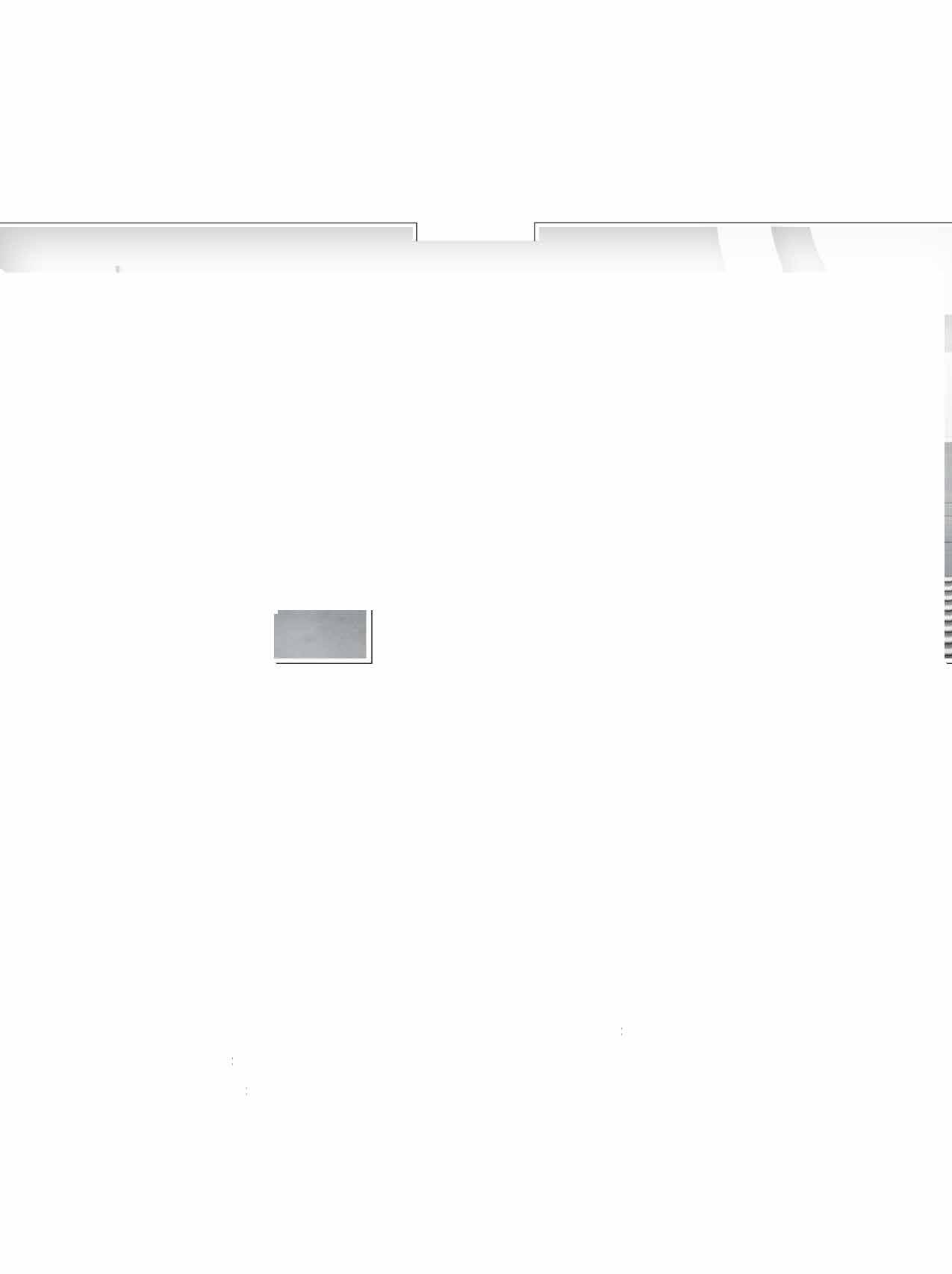
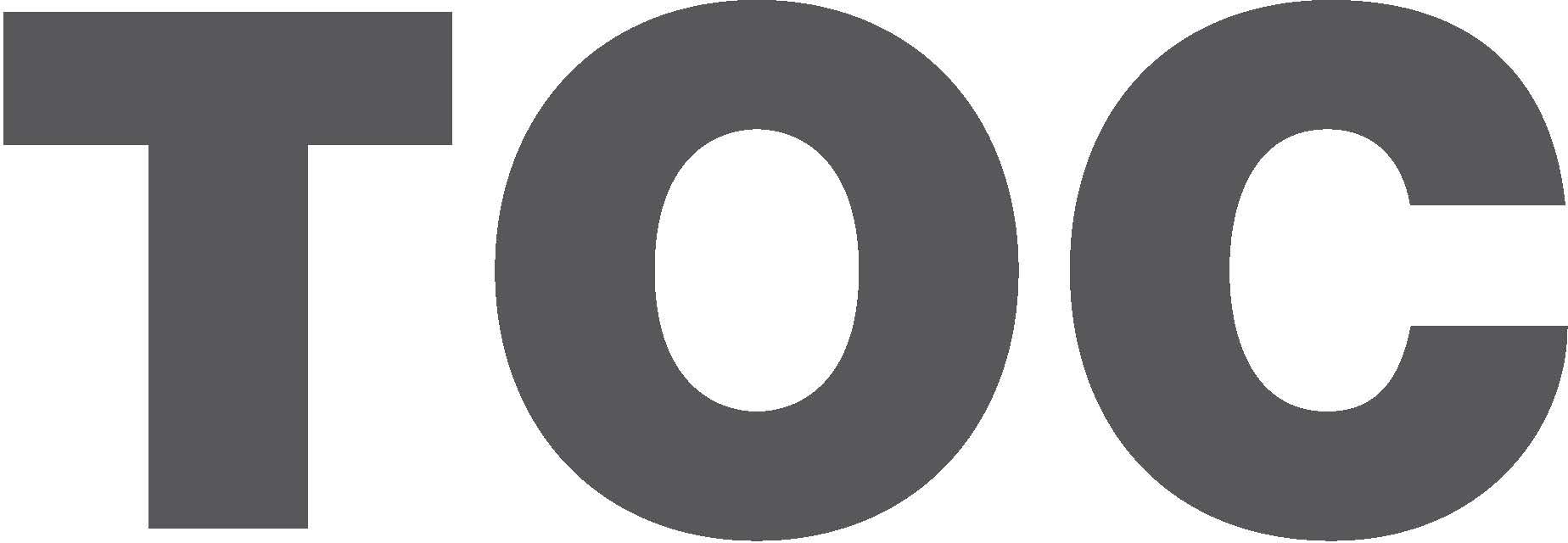


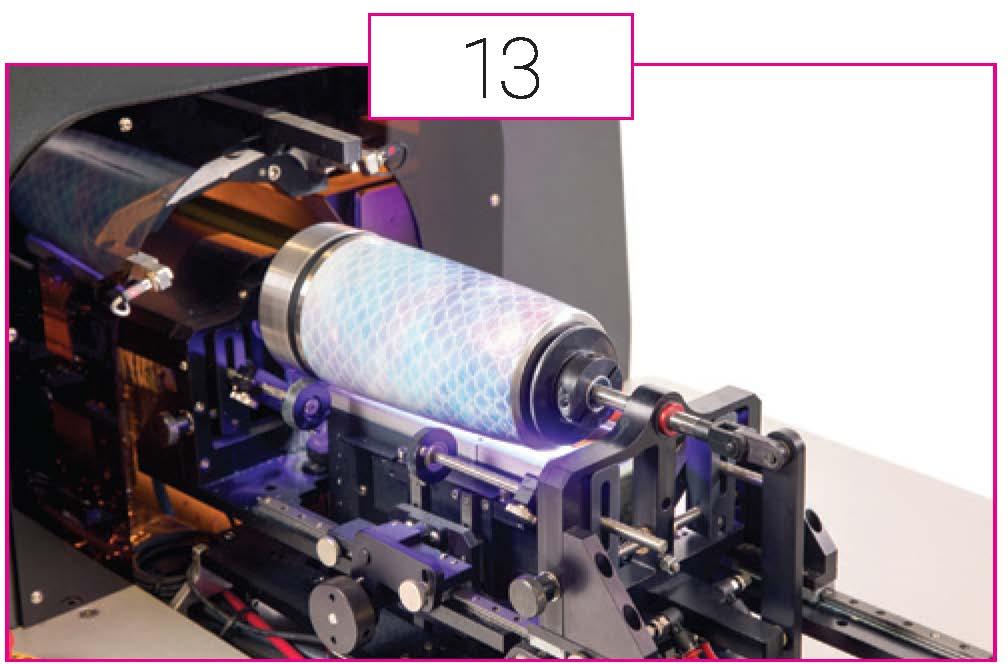


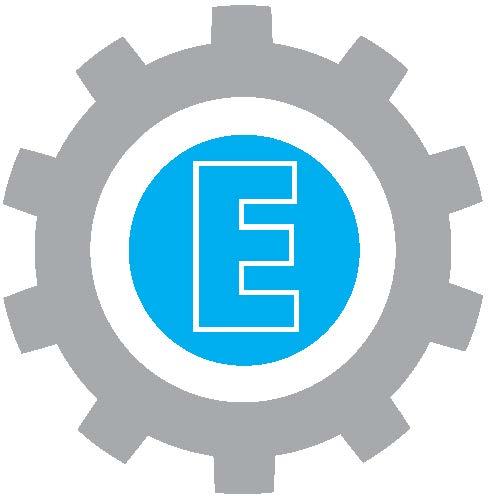


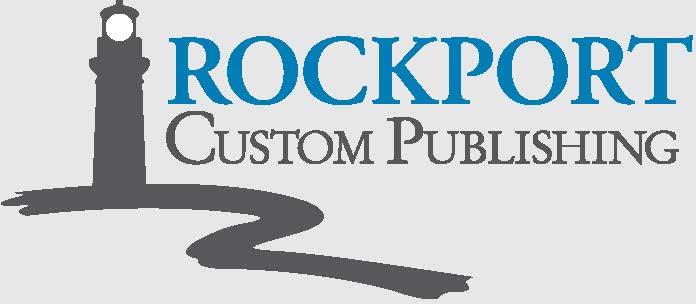




















































 1. Kornit's Presto MAX is a direct-to-fabric solution.
2. Epson launched the Manna Lisa 8000 in 2022, an industrial direct-to-fabric printer for the North American market. 3. In 2022 Optimum Digital debuted the Nirvana Belt eco-pigment series, an industrial onestep direct-to-fabric printing solution without need for pre- or post-treatment, which is now available in North AmericathroughitsAtlanta, GA offices.
1. Kornit's Presto MAX is a direct-to-fabric solution.
2. Epson launched the Manna Lisa 8000 in 2022, an industrial direct-to-fabric printer for the North American market. 3. In 2022 Optimum Digital debuted the Nirvana Belt eco-pigment series, an industrial onestep direct-to-fabric printing solution without need for pre- or post-treatment, which is now available in North AmericathroughitsAtlanta, GA offices.









